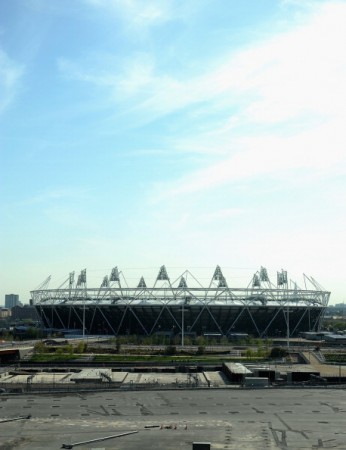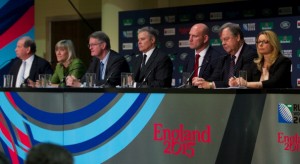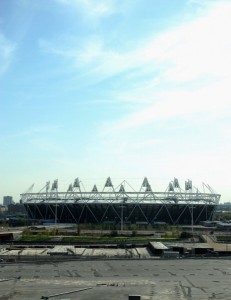
Doing it for the kids: ER 2015 ambassador Lawrence Dallaglio hopes the World Cup will inspire a new generation
By Owain Jones
AMID GREAT fanfare in the cavernous Live Room at Twickenham, Debbie Jevans, CEO of ER2015, and assembled rugby dignitaries, sat at the raised top table to announce the fixtures and venues for the 2015 Rugby World Cup.
Amid the usual platitudes and soundbites on a sun-soaked morning at Twickenham, it was the eye-watering numbers that stood out, showing how far the games has progressed since England last hosted the Rugby World Cup in 1991.
Brett Gosper, the IRB Chief Executive announced that the competition would be viewed by a global audience of 4 billion across 207 ‘territories’ with the proceeds from the 44-day tournament represent 92 per cent of the IRB’s revenue to inject into the game. They project revenue from the tournament will reach a none-too-shabby £300m
There will be 2.65 million tickets released to the public, most likely in early 2014 – which is a reduction of 300,000 on previous estimates, mainly due to Old Trafford withdrawing last month.
This last fact has raised real concerns of ticket price hikes, in order for the ER2015 to meet targets set by the IRB, including an £80m staging fee.
In all, there will be 48-games crammed into an exhaustive six-week schedule that will take rugby around England at 13 stadiums, nine of which are at football stadiums, or as Jevans tactfully put it, ‘multi-sport venues’.
The organisers were proud to announce that 92 per cent of the population would be within 50 miles of one of the stadiums. It will still be a testament to the organizers if they can mobilise the casual fan to games and reach the 2.3m ticket sales needed to break-even, especially when the behemoth that is the Premier League is in full flow.
Tournament ambassador Lawrence Dallaglio started the call-to-arms by asking for ‘the whole country to be up on its feet.’
The geographic spread is all part of a wider vision to spread the game in non-traditional rugby areas, with the North East (St James’ Park), North-West (Etihad, Elland Road) selected. However, with 16 matches taking place within London, at Wembley, Twickenham or the Olympic Stadium, there have already been claims that the tournament is too ‘London-centric’. These claims were swiftly and politely rejected.
Traditionalists will also be smarting, pointing to the fact that only two Aviva Premiership grounds, Sandy Park and Kingsholm, will host games, with those at Franklins’ Gardens and Welford Road, upset to have been overlooked.
The Tigers, who this week have provided six Lions to the squad, have found it especially difficult to reconcile the fact that their atmospheric old ground has been overlooked for the newer Leicester City Stadium, which lies just half-a-mile away, and houses 6,000 more seats.
Dallaglio was quick to point out that the Tigers had already used the stadium for larger Heineken Cup matches.
One winner from the fixture schedule appears to be the WRU and the Welsh economy who were quick to trumpet a £100m boost to the economy after securing eight games, but crucially, not the key England and Australia games. This despite a tongue-in-cheek invitation from WRU Chief Executive Roger Lewis.
Those mouth-watering tests will take place at Twickenham, as RFU Chief Executive was keen to point out, ‘it’s our World Cup’.
Despite expected gripes given by fans and the media over ticketing and location, by October 31, 2015, when the final whistle blows on the tournament, ER2015 will hope they can look back on the most (commercially) successful tournament in rugby history. We wish them luck.
ER2015 Venues
Wembley Stadium (90,256 capacity)
Twickenham (81,605)
Millennium Stadium (74,154)
Olympic Stadium (54,000)
St James’ Park (52,409)
Etihad Stadium (47,800)
Villa Park (42,785)
Elland Road (37,914)
Leicester City (32,312)
Brighton Community Stadium (30,750)
Stadium MK (30,717)
Kingsholm (16,115)
Sandy Park (12,300)







